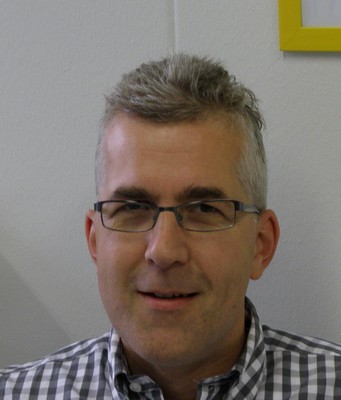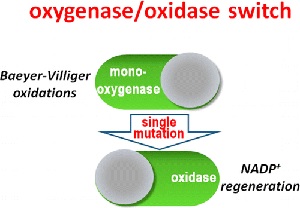One mutation creates a new enzyme
University of Groningen biochemists led by Professor Marco Fraaije have completely changed the activity of an enzyme in just one mutation. The new enzyme catalyses an important step in a frequently used chemical process. Fraaije is now working with industrial partners to see whether the enzyme will live up to its promise.

The cofactor NADP+ is essential to many chemical reactions. It is used as an acceptor for electrons, which turn it into NADPH. ‘But it is a rather costly compound, so for a biotechnological process you want to regenerate NADPH back into NADP+’, explains Fraaije. So far, however, only complex chemical processes have been able do this.
‘We knew about an enzyme from a class called monooxygenases that normally inserts an oxygen atom into a compound with the help of NADPH. However, this enzyme can also perform a reaction that reduces dioxygen into hydrogen peroxide while converting NADPH into NADP+, but at a very low rate.’ The biochemists took the bacterial gene for this enzyme and mutated it at specific locations. ‘We knew which part of the protein was responsible for the activity with dioxygen. That’s where we wanted to change it.’
They created a small mutant library and assessed all the mutants. ‘One stood out from the rest. It was able to use dioxygen to efficiently oxidize NADPH, just like we wanted.’ In this enzyme, they had substituted a single amino acid (amino acids are the building blocks of proteins), replacing a cysteine with an aspartate. ‘Those two amino acids are rather similar. Just three atoms differ, when the entire enzyme comprises some 45,000 atoms.’

The mutant enzyme catalyses a reaction that regenerates NADP+ at the expense of cheap dioxygen and the only by-product is hydrogen peroxide. ‘Furthermore, we need no other chemicals or cofactors, just the enzyme. That makes it very attractive for use in industrial processes.’ The findings were published in the first week of December in the Journal of the American Chemical Society.
Fraaije is now working with two different companies to see whether the successful lab experiments can be replicated under industrial conditions. ‘Another advantage of this enzyme is that it’s very stable at higher temperatures and in different solvents. Some natural enzymes can catalyse the same reaction, but they are not stable enough for industrial use.’
The Fraaije research group belongs to the Groningen Biomolecular Sciences and Biotechnology Institute (GBB) of the Faculty of Mathematics and Natural Sciences at the University of Groningen.
Referentie: Finding the Switch: Turning a Baeyer-Villiger Monooxygenase into a NADPH Oxidase. Patrícia B. Brondani , Hanna M. Dudek , Christian Martinoli , Andrea Mattevi , and Marco W. Fraaije . J. Am. Chem. Soc., DOI: 10.1021/ja508265b
| Last modified: | 10 June 2015 2.56 p.m. |
More news
-
16 April 2024
UG signs Barcelona Declaration on Open Research Information
In a significant stride toward advancing responsible research assessment and open science, the University of Groningen has officially signed the Barcelona Declaration on Open Research Information.
-
02 April 2024
Flying on wood dust
Every two weeks, UG Makers puts the spotlight on a researcher who has created something tangible, ranging from homemade measuring equipment for academic research to small or larger products that can change our daily lives. That is how UG...
-
18 March 2024
VentureLab North helps researchers to develop succesful startups
It has happened to many researchers. While working, you suddenly ask yourself: would this not be incredibly useful for people outside of my own research discipline? There are many ways to share the results of your research. For example, think of a...

